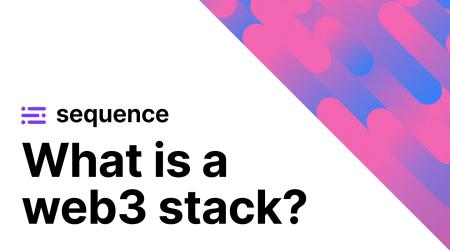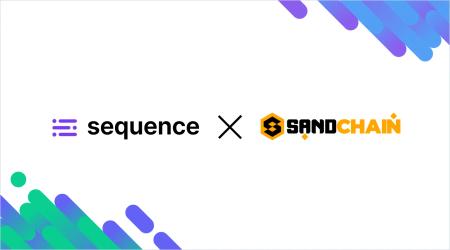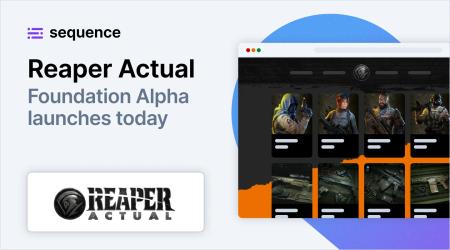The convergence of web3 and artificial intelligence (AI) is reshaping the foundation of today’s internet: powering everything from decentralized finance and smart contracts to AI-driven DAOs and personalized metaverse experiences, and beyond.
In this article, we explore how AI is accelerating the evolution of web3, highlight real-world use cases, and share how developers and brands can prepare for what’s next.
Key takeaways
- AI is transforming web3 with intelligent automation, personalization, and enhanced user interactions.
- Web3 games already use AI to generate adaptive loot, quests, and rewards based on real-time player behavior.
- AI agents bring autonomy to decentralized platforms, powering tasks like trading, user support, and complex decision-making.
- AI may improve smart contracts through learning-based logic, sentiment analysis, and fraud detection.
The synergy between AI and web3
Web3 is built on decentralization, transparency, and user ownership, replacing centralized intermediaries with trustless protocols and distributed consensus mechanisms powered by blockchain.
AI is emerging as a powerful ally to web3, bringing intelligence and automation to decentralized systems — driven by two core technologies:
- Deep learning: A branch of AI that leverages neural networks to detect complex patterns within large datasets. In web3, it plays a key role in enhancing security (e.g., fraud detection, anomaly spotting) and powering advanced analytics for user behavior and network insights.
- Machine learning models: AI-driven agents powered by reinforcement learning adapt in real-time to dynamic conditions. These agents can analyze onchain data, social sentiment, and historical prices to automate processes with precision.
Here are some of the most impactful ways AI is enhancing web3:
- Personalized content generation, such as in-game items, or other digital assets like rewards, or entire user experiences. Players may enjoy a fully customized gaming experience: custom missions and NPCs, unique and tradeable rewards.
- Onchain autonomous agents, who already own crypto wallets, negotiate deals and execute trades autonomously. These agents might interact with dapps directly, creating machine-to-machine economies.
- Streamlined setup and automated governance for DAOs, building on the existing capabilities of smart contracts. AI can bring sentiment analysis, proposal summarization, and voting pattern predictions. For example, an AI could automatically curate proposals and recommend actions to token holders based on community values and voting history.
- Enhanced fraud detection and predictive analytics on web3 platforms like NFT marketplaces or decentralized exchanges. For example, AI could help developers and collectors to detect fake or plagiarized content, provide intelligent rarity scoring, or forecast NFT or crypto price trends.
- Innovative interaction models for smart contracts, such as voice-activated commands and real-time responsiveness. Rather than rigid "if-this-then-that" scripts, AI-powered contracts can learn from user behavior, adapt over time, and incorporate external data with better context for optimized user experiences.
Risks of employing AI in web3
While AI brings powerful capabilities to web3, its integration also introduces critical risks that must be proactively addressed to ensure trust, fairness, and security in decentralized networks.
- Deepfakes and manipulated content: AI can generate highly realistic deepfakes or synthetic content (art) that fraudsters may use on web3 marketplaces.
- AI bias in decentralized systems: Poorly trained AI models can replicate human biases, leading to unfair outcomes in DAOs or lending protocols. Open-source AI models with audit trails are key to minimizing this risk.
- Security concerns: If AI agents control web3 wallets or smart contracts, a single exploit could cause significant financial damage. Developers should run rigorous testing and on-chain model verification to ensure secure guardrails are in place for their users.
Real-world applications of AI in web3 today
From gaming and finance to on-chain support, AI is already powering a wave of real-world web3 applications that are redefining how users interact with decentralized platforms. AI dapps saw a 26% surge in activity in Q1 2025 compared to the end of 2024 — signaling a breakout moment for AI-powered web3 innovation. Here are just a few examples of what’s already possible 👇
Proof of Humanity and World Network
Artificial intelligence is rapidly approaching human-level capabilities in content creation and interaction. Distinguishing between real people and bots is becoming increasingly infeasible, a shift that carries major implications for online identity, economic systems, and governance.In response, several web3 initiatives were born, like World Network (originally Worldcoin), which aims to establish a scalable and privacy-preserving “proof of humanity” layer using biometric verification (e.g., iris scans) paired with zero-knowledge (zk) cryptography.
By anchoring this human identity verification to a blockchain, the World Network creates a tamper-resistant, decentralized registry that guarantees a user is a unique human without revealing personal data. This cryptographic attestation enables applications to filter out bots, allocate resources fairly, and enforce sybil-resistance in voting or token distribution systems. An essential infrastructure as AI-generated agents proliferate across the internet.
AI x web3 use case: AI for personalized web3 gaming experiences and rewards
Using tools like Scenario API, developers can generate AI-driven game loot and quests in real time, so that every game session feels unique. For example, a player who consistently uses stealth tactics might receive gear tailored for that style, all generated onchain with transparent, AI-powered logic. This enhances engagement while fostering a deeper emotional connection between players and the game world, driven by intelligent design instead of static programming.
Beyond gameplay, AI is transforming how rewards are distributed within web3 economies. With Sequence, developers can link AI models to real-time player data and use it to determine when and how to issue rewards. These AI-informed decisions can adjust reward tiers, mint rare NFTs, or drop in-game tokens based on player engagement and behavior, all while maintaining fairness and reducing exploitation. Combined with Sequence’s chain-agnostic infrastructure, AI-enhanced web3 games become more scalable, interactive, and rewarding.
AI x web3 use case: AI agents
A prominent use case of AI in web3 is autonomous trading bots, like Polytrader. These agents continuously scan onchain data, historical price movements, and market sentiment to make real-time trading decisions without human intervention.
Another example is AI agents as onchain customer support like Octavia, which interacts with users directly through smart contract-integrated chat interfaces or web3-native messaging systems. They can verify wallet activity, answer user questions, assist with gas fees, or help recover account access, among other things.
How can web3 developers and brands prepare to create AI-enabled games and experiences?
At Sequence, we're building a future-proof web3 development platform to make AI-enabled web3 experiences a reality.
Thanks to our modular, composable web3 stack, developers and brands can integrate AI logic seamlessly across their web3 games and applications:
- Sequence Collections enable developers to easily mint, manage, and display AI-generated NFTs within web3 applications and games using a streamlined API and low-code dashboard. This solution simplifies the creation of custom NFT experiences, supports custom metadata, and integrates seamlessly with the broader Sequence developer stack.
- Sequence Analytics enables developers and AI tools to track, visualize, and understand user behavior, transactions, and onchain activity within their web3 experiences. It offers real-time dashboards, customizable event tracking, and deep insights to help optimize user engagement and app performance.
- Our Sequence SDK suite is a comprehensive toolkit designed to simplify the development of web3 applications by offering seamless wallet integration, smart contract interactions, and scalable infrastructure. It provides developers with easy-to-use APIs and modular components to build dApps across multiple EVM-compatible chains, while supporting features like gasless transactions, session keys, and transaction batching. With built-in support for web, mobile, Unity, and Unreal Engine, the SDK suite focuses on enhancing AI-enabled user experiences without compromising security or decentralization.
- The Sequence MCP Server integrates powerful AI agents like Claude directly into devs’ favorite IDE, providing intelligent support for Sequence development tasks, whether you're querying blockchain data or working with smart contracts.
Get started building AI-enabled web3 experiences for free with Sequence Builder, our all-in-one web3 developer platform.
Check out our developer docs for easy integration guides. Our entire documentation is AI-friendly via an llms.txt file.
And reach out! Our team is here to help bring your AI x web3 vision to life!
Sequence makes building onchain simple. Developers and teams can launch, grow, and monetize apps with unified wallets, 1-click cross-chain transactions, and real-time data, all in a modular and secure stack. No more stitching together fragmented tools or battling poor user flows. Sequence is production-ready infrastructure that helps teams ship faster, onboard more users, and scale confidently. From chains and stablecoins to DeFi and gaming, Sequence powers developers and applications across the EVM ecosystem with billions in transaction volume and millions of users. Trusted by leaders in blockchain, Sequence powers today’s onchain apps and delivers future-proof infrastructure for tomorrow’s breakthroughs. Learn more at sequence.xyz.
Written by

Sequence team
Related posts







